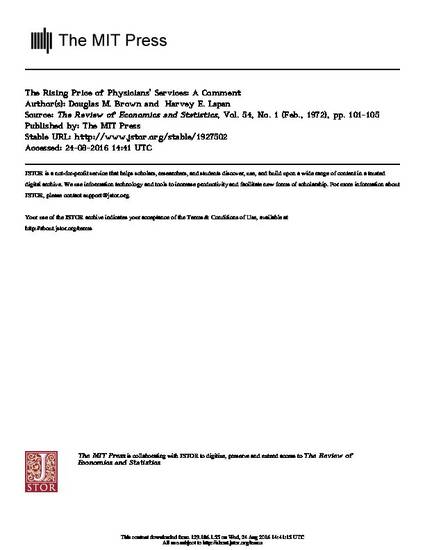
Article
The Rising Price of Physicians’ Services: A Comment
The Review of Economics and Statistics
(1972)
Abstract
In a recent article in this REVIEW, Martin Feldstein (1970) attempted to explain the
pricing of physicians' services in the United States between 1948 and 1966.1 In his
attempt to measure the de mand for physicians' services, Feldstein found a positive price
coefficient which led him to conclude that ". . . the aggregate pricing and use of physi cians'
services can be understood best by assuming that permanent excess demand prevails." 2 Further,
since his estimates imply a backward-bending sup ply curve for physicians' services, he
infers "... that government policies to restrain price inflation may increase excess demand but
will not decrease and may even increase the quantity of physicians' services provided." 3 We
intend to show that ( 1) the positive price elasticity Feldstein obtains in try ing to
estimate the demand curve might result from difficulties in defining his price variable (and from
the fact that insured and uninsured pay different prices), and ( 2) his supply estimates are
biased be cause of his use of a dependent variable, inputs (paramedical personnel,
equipment, etc.), as an in dependent variable in his supply equation.4
Disciplines
Publication Date
February, 1972
DOI
10.2307/1927502
Publisher Statement
© 1972 The MIT Press
Citation Information
Douglas M. Brown and Harvey E. Lapan. "The Rising Price of Physicians’ Services: A Comment" The Review of Economics and Statistics Vol. 54 Iss. 1 (1972) p. 101 - 105 Available at: http://works.bepress.com/harvey-lapan/33/
